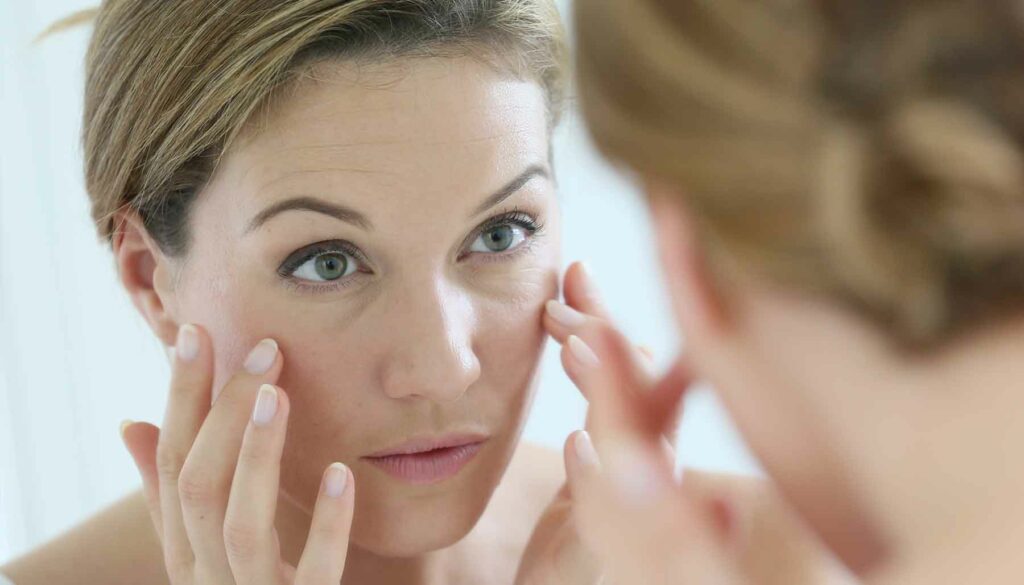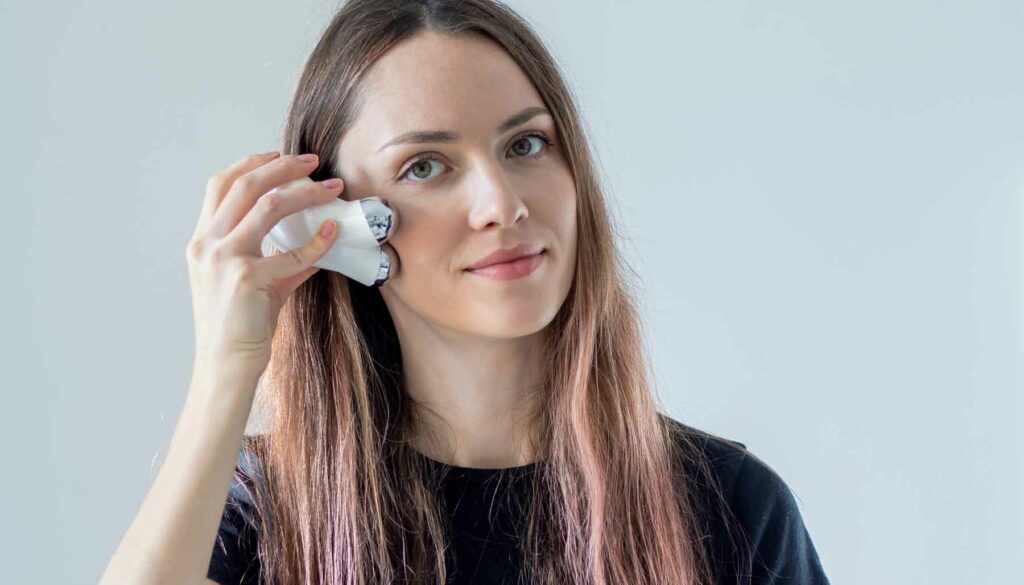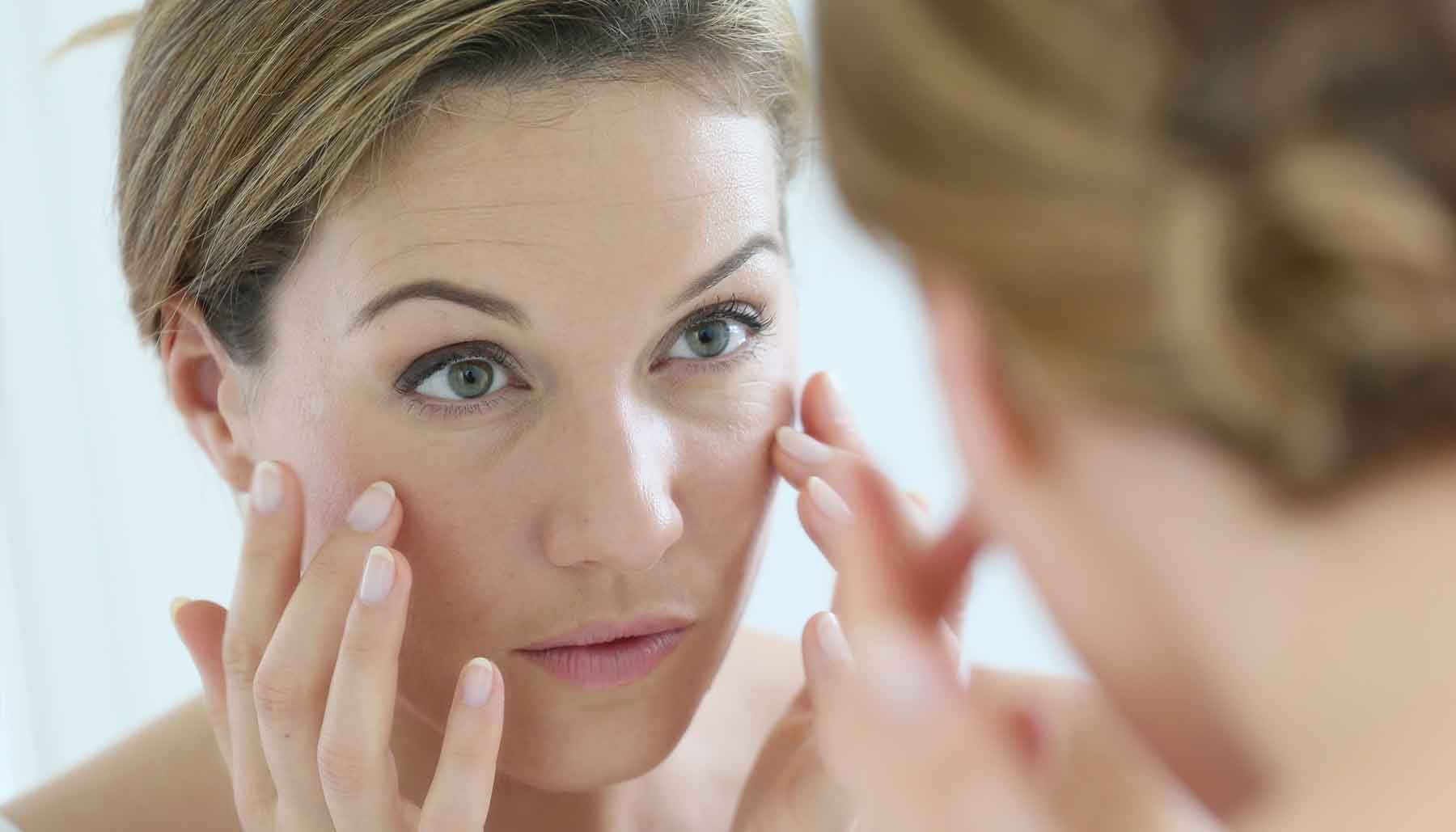With nearly everyone hoping to stave off the signs of aging, there are countless creams, serums, devices, and other products that promise to keep us looking young. You’ll find something at nearly every price point.

There are a few newer high-tech skincare devices rising in popularity. From LED masks to IPL hair removal devices and everything in between, there’s a tech-powered device for all kinds of concerns. But recently, microcurrent facials have been getting a lot of attention.
Microcurrent promises to give your face a non-surgical lift. Plus, it stands to be a non-invasive alternative to the usual invasive procedures, such as Botox, fillers, or threads. So, what is it exactly, and does it really live up to all that hype?
Is a microcurrent facial going to take five years off my face? Can it take the place of my regular Botox appointment?
Related: 11 Things to Consider Before Getting Botox
Well, not really. While these devices can be effective, we should know what we’re getting into and what we can realistically expect to see. That way, you can decide if the high price tag is worth it to you or not.
What Is a Microcurrent Facial?

A microcurrent facial is a non-invasive cosmetic treatment done with a – you guessed it – microcurrent device. This special handheld device has two electrodes on the end, which deliver a current of electricity. Little impulses of electricity target the muscle under your skin. This low-voltage electricity is supposed to stimulate the muscles in your face, kind of like a workout for your facial muscles. It can also help stimulate collagen and elastin.
Professional treatments done in-office by a dermatologist or esthetician are done with machines that utilize higher-voltage electricity than their at-home counterparts. This leads to more pronounced results, and some people report they can see an immediate difference after sessions. Dermatologists and estheticians may also tailor your treatment to your specific needs by adding other services, such as serums, face masks, massages, or other treatments.
You can now also purchase at-home microcurrent devices to do the treatment yourself. These devices aren’t as powerful as the in-office devices used by professionals. Even still, they still promise to deliver results. The results will just be more subtle. You also might need more treatments to see those results than you would with professional treatments.
With both in-home and professional microcurrent facials, there is no downtime. You can resume your usual activities immediately.
Benefits of Microcurrent Treatments

There are a lot of impressive before and after photos out there of people who use microcurrent devices. From people who have treatments done by professionals to those doing it themselves with an at-home device, there are a lot of folks boasting about the benefits.
While microcurrent treatments aren’t exactly new, using them for cosmetic purposes is pretty new. We don’t have a ton of clinical trials to prove conclusively how effective the treatments are. What limited research we do have suggests that microcurrent devices do some pretty cool things, though! Here’s what a microcurrent device may do for you with consistent use:
- Stimulating Facial Muscles – The whole point of the electrical impulses is to stimulate your facial muscles. This is what makes the face look tighter and less saggy or wrinkled. As we get older, our muscle strength naturally decreases. This can contribute to signs of aging, like the appearance of loose skin. By stimulating (and hopefully strengthening) those muscles, we’re encouraging a more “lifted” appearance.
- Boosting Blood Circulation – Blood circulation is important for a variety of reasons. But in terms of looking more youthful, increasing blood flow means enhancing the delivery of oxygen and nutrients to the cells. It helps to produce more collagen and elastin, important components of firmer, younger-looking skin.
- Improving Wound Healing – There is some research that suggests microcurrent treatments may speed up the healing process. This is partly due to the improved blood flow, but it may also reduce inflammation and suppress pain. Healing can decrease the appearance of acne scarring and pitting.
Are Microcurrent Facials Safe?

There haven’t been many clinical trials examining the side effects or long-term effects of microcurrent therapy. Even still, dermatologists generally consider microcurrent devices safe to use. At the same time, we do know that the electrical impulses are not strong enough to cause injury. If used correctly, devices will not hurt or cause skin damage.
There are some cases where microcurrent devices shouldn’t be used:
- It is not recommended during pregnancy, because there have been no studies on whether the treatment is safe for a developing fetus.
- Individuals with epilepsy or heart conditions should talk to their doctors before getting microcurrent treatments.
- If you have a pacemaker, it could interfere with the functionality of the device. Other implanted medical devices, plates, or pins are also causes for concern.
- Individuals who have recently received neurotoxin injections, like Botox, should wait at least two weeks before having a microcurrent facial.
If you are looking at microcurrent devices for at-home use, unregulated or untested devices could potentially pose a risk. Choose a device that has been cleared by the Food and Drug Administration (FDA). I also recommend purchasing a device directly from the company, or a trusted retailer such as Ulta, Nordstrom, or Sephora. Let’s skip the cheap knockoffs on Amazon.
When it comes to in-office visits, always seek treatment from a licensed professional. We’re talking about electrical currents and our faces, here. It’s worth it to have the treatment done correctly by someone who knows what they are doing with the right equipment.
How Much Do Microcurrent Facials Cost?

None of that is important if you don’t know how much a treatment costs, right?
First things first: you’re likely going to pay for a microcurrent facial out of pocket. There are certain medical conditions, such as a wound or severe acne, that might prompt an insurance company to cover this treatment. However, most of us are seeking a microcurrent facial for aesthetic reasons. That typically means paying for the treatment yourself.
Just like with other treatments, the cost of a professional treatment will vary depending on where you live and who you go to. You’ll likely be looking at anywhere between $200 and $600 per session. While that sounds a little pricy, the results will be much more noticeable than with an at-home device.
On the other hand, at-home devices can average anywhere from $150 to $500, depending on the device itself. It varies depending on the size, strength, and if it has attachments. The good thing about at-home devices, though, is that you can use them many times, for the cost of one professional treatment. You don’t have to wait for an appointment opening, either.
Using an At-Home Microcurrent Device

If you decide you’d like to try out the at-home route, it’s important to follow the directions closely. Consistency is key to achieving any results with at-home devices.
In general, using your microcurrent device every other day, for five to ten minutes, is what you’re aiming for. Some brands vary slightly from this, so read those directions! For instance, NuFace recommends using their device five times a week for the first two months and then dropping to two or three times a week for maintenance.
To use most devices, you will need a conductive gel or serum. Typically, microcurrent device brands have their own that you can purchase along with the device. These conductive gels will help the current reach the muscles since our skin is kind of resistant to electrical current. Hey, our skin is a protective outer layer, after all. They also help the device glide on your skin, so you’re not tugging or pulling at it.
I’ve seen plenty of people raving about using the much cheaper aloe vera gel as a conductive gel, as well. While it’s true that it might work, it likely won’t work as well as the conductive gels you can purchase. But, you can remedy that with some good ol’ table salt. Just mix that aloe vera with a pinch of salt, and you’re good to go.
Always start with a clean face before applying the gel, though. And as with any other facial tools, give your microcurrent device a good clean, too. You can rinse it after each use, and then give it a more thorough clean at least once a week with dish soap or a cleansing wipe. You don’t want dirt, oils, or bacteria building up on it.
Of course, when we’re talking about at-home devices, we need to be reasonable with our expectations. While it is true that many people see visible results, we can’t expect a miracle. An at-home microcurrent facial will never provide drastic results like Botox and fillers. And really, it’s not going to be as effective as having the procedure done by a trained professional.
However, they can realistically provide some results for many people. It’s worth noting that many dermatologists recommend at-home microcurrent devices to their patients, to use between professional microcurrent facials in-office.













